What is the best recipe for mashed potatoes?
Mashed potatoes are pure comfort food. They evoke memories of family dinners and holiday gatherings. The way your mom made them is probably still your favorite.
Perhaps she left the skins on the red potatoes for a rustic, hearty feel. Or maybe she swore by a box of those mysterious potato flakes that somehow turned into fluffy clouds. Either way, that first spoonful always feels like home.
The beauty of mashed potatoes is their flexibility. You can keep them simple with just butter, milk, and salt, or dress them up with cream, garlic, or even a little cheese.
They don’t need to be perfect—lumps are welcome if that’s how you grew up eating them. Smashed or smooth, they work with almost any meal.
This recipe takes that nostalgic base and makes it just a little better. We use real potatoes, plenty of butter, and a few easy tricks to achieve a creamy and rich texture without compromising the homemade vibe.
If you love mashed potatoes that taste like memories but feel just a touch fancier, this is your recipe. Pull out your favorite pot and get ready to whip up a bowl of comfort in no time.
Best Mashed Potatoes Recipe
Ingredients
- 2 pounds potatoes either starchy - waxy or a mix of both
- 1 teaspoon salt
- 7 tablespoons unsalted butter
- 1 cup half and half
- freshly ground black or white pepper - to taste
Instructions
- Cook the potatoes until fork tender.
- Mash with salt, butter, and half and half.
- Season with freshly ground pepper
- Now that we have a working list of ingredients and a method, there are plenty of other decisions to make.
Choosing the Right Potato to Mash
A potato is a package that contains starch, sugar, and water along with some nutrients, especially in the skins. But, there are many varieties of potatoes, and they differ in the proportions of each component.
Most cookbooks tell you to use high-starch potatoes for mashing, like the russet or the slightly less but still starchy Yukon Gold. Starches swell at about 150°F, so the more starch your potato contains, the fluffier your mashed potatoes will be.
| Potato Type | Description | Why It's Ranked This Way |
|---|---|---|
| Russet (Idaho) | Starchy, light, and fluffy when cooked. | Best for classic mashed potatoes. High starch absorbs butter and cream well for a smooth, fluffy texture. |
| Yukon Gold | Medium starch with a buttery flavor and creamy texture. | Excellent for rich, velvety mashed potatoes. Slightly denser than Russets, but naturally flavorful. |
| Red Potatoes | Waxy texture with thin skin and a firm bite. | Great for rustic mashed potatoes with skins on. Not as fluffy, but holds shape and adds texture. |
| White Potatoes | All-purpose with a medium starch level and mild flavor. | Good in a pinch. Decent mash texture, but can be slightly gluey if overworked. |
| Purple Potatoes | Firm texture and earthy flavor with vibrant color. | Fun for presentation but too firm and dry for smooth mashed potatoes. |
| Fingerling | Small, waxy potatoes with nutty flavor. | Too firm and low in starch for traditional mashing. Better for roasting or salads. |
| New Potatoes | Very young, waxy potatoes with thin skin. | Too moist and low in starch. Can turn pasty when mashed. |
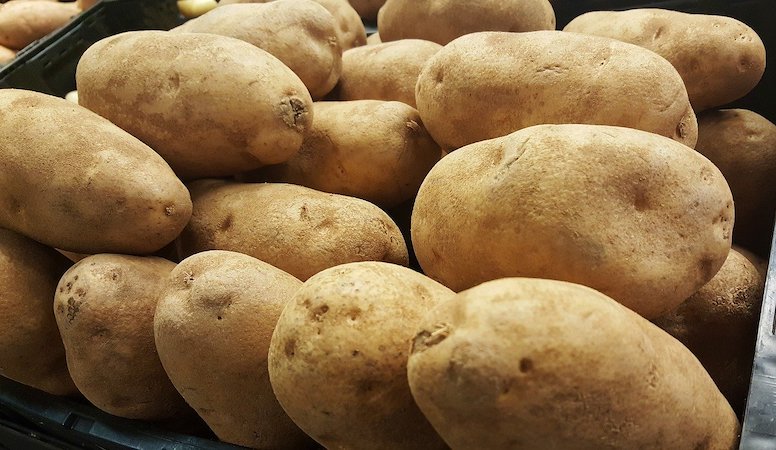
My Favorite Tips for Mashed Potatoes
| Tip | Explanation |
|---|---|
| Start with cold water | Place potatoes in cold, salted water before boiling to ensure even cooking from edge to center. |
| Use starchy potatoes | Russets or Yukon Golds give the fluffiest, creamiest texture because they absorb butter and cream well. |
| Don’t overcook | Boil just until fork-tender. Overcooked potatoes absorb too much water and become watery. |
| Dry the potatoes | After draining, return potatoes to the pot on low heat for a minute or two to evaporate excess moisture. |
| Warm your dairy | Heat milk, cream, or butter before adding to prevent cooling the mash and to help it blend smoothly. |
| Use a ricer or masher | For fluffiness, a ricer is ideal. A masher works well for a chunkier, rustic style. Avoid blenders. |
| Season in layers | Add salt while boiling, then taste and adjust after mashing. Layered seasoning boosts flavor depth. |
| Don’t overmix | Mix just until smooth. Overworking releases too much starch and turns potatoes gluey. |
| Add fat first | Mix in butter before milk or cream for richer flavor and better texture. |
| Finish with flair | Top with a drizzle of melted butter, chives, or roasted garlic for flavor and presentation. |
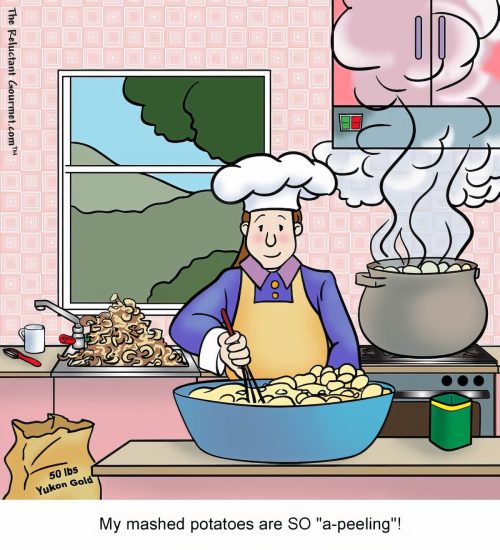
What About Those Peels
Cooking potatoes with the skin on or off both have their perks. Leaving the skin on saves time. You skip peeling and keep more nutrients. Skins add texture and a rustic look, especially with red or Yukon gold potatoes. They also help the potato hold its shape while boiling, which can keep them from getting too waterlogged.
Peeling them first gives you super smooth mashed potatoes. No bits, no chew—just creamy, dreamy mash. That’s great if you’re going for a silky finish or using a ricer. Some people just prefer that classic, uniform texture.
If you’re unsure, try a mix. Peel most, but leave some skins in for a little character. It really depends on your style and what you’re serving with the potatoes. Either way, you’re still ending up with comfort food in a bowl. So pick your method and mash away.
Start Your Potatoes in Cold Water!
Starting your potatoes in cold water makes a big difference. It helps them cook evenly from the inside out.
If you drop raw potatoes into boiling water, the outsides cook too fast while the centers stay firm. That leads to uneven texture—some bits turn mushy, others stay undercooked.
Cold water gives the potatoes time to heat gradually. As the water warms, the heat slowly penetrates each piece.
This gives you soft, evenly cooked potatoes that mash up nice and smooth. No lumps. No chalky centers.
It also helps with flavor. When you start with cold, salted water, the potatoes absorb some of that seasoning as they cook. That means better taste from the inside out—not just on the surface.
It might feel like an extra step, but it’s not. It’s simply the right starting point. Cold water, potatoes, a handful of salt, and a little patience lead to a better mash.
Professional chefs do it this way for a reason. It’s a small habit that makes a big difference.
If you want creamy, flavorful mashed potatoes every time, cold water is the way to go. Cover the potatoes, turn on the heat, and let them come to a gentle boil.
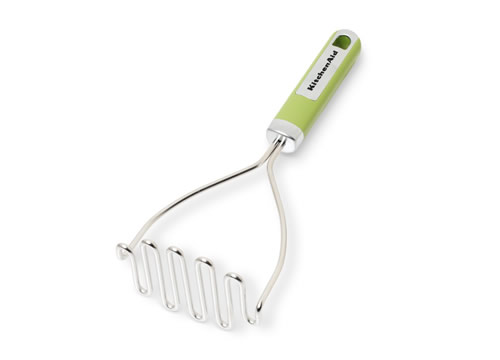
What Tool to Use to Mash Potatoes
Like the answer to most questions about cooking, the right tool for the job depends on your taste. If you like very light and fluffy mashed potatoes with no lumps, there’s a tool for that. If you like mashed potatoes with some texture, there’s a tool for that, too.
| Tool | Description | Why Use It | Result |
|---|---|---|---|
| Potato Masher | A handheld tool with a zigzag or round plate for manually mashing potatoes. | Easy to use, no electricity needed, preserves some texture. | Rustic mash with some lumps; great for red or Yukon gold potatoes. |
| Ricer | Forces potatoes through small holes, similar to a garlic press. | Best for ultra-smooth, fluffy mashed potatoes. | Light, airy texture with no lumps; ideal for buttery purées. |
| Food Mill | Hand-cranked device with a perforated disk and rotating blade. | Great for large batches and removing skins at the same time. | Silky texture, like a ricer, but faster for bigger portions. |
| Hand Mixer | Electric beaters used directly in the pot or bowl. | Quick and convenient if you like creamy mashed potatoes. | Fluffy and smooth, but can become gluey if overmixed. |
| Stand Mixer | Electric mixer with paddle or whisk attachment. | Hands-free and good for large batches. | Consistent texture; creamy or whipped depending on speed and time. |
| Fork | Basic kitchen fork for small batches or rustic texture. | Good for quick jobs or camping-style meals. | Chunky, uneven mash; full of old-school charm. |
| Immersion Blender | Handheld electric blender used directly in the pot. | Fastest for a super-smooth texture. | Very smooth but easily overmixes, creating gluey potatoes. |
Mashed Potatoes Frequently Asked Questions
Can You Use Baked Potatoes for Mashing?
You can bake potatoes for mashing to avoid excess water. Boiling adds moisture, which can dilute flavor.
To fix this, let boiled potatoes dry over low heat in a covered pot for about five minutes after draining. This removes some of the extra water.
Baking skips the problem entirely. It doesn’t add water and even evaporates some, giving you a deeper, more concentrated potato flavor.
The only downside? Baking takes longer than boiling. However, with a little planning, it’s a worthwhile trade-off for a better flavor.
Should You Salt the Water Before Boiling
If you plan to boil your potatoes, salt the water generously—it should taste like seawater. This is the best way to season the potatoes from the inside out, just like with pasta.
You can also toss in pepper or herbs. As the potatoes cook, they absorb those flavors along with the salt.
I tested this myself and was surprised. The potatoes came out well-seasoned and slightly peppery, even before I added anything else.
When Do You Add the Butter, Milk, Cream?
Add the butter first, right after mashing the hot potatoes. The heat helps the butter melt and coat the potato starch, which gives you a richer, smoother texture.
Next, add warm milk or cream a little at a time. Warm dairy blends in better and keeps the potatoes from cooling down. Adding it gradually lets you control the consistency—whether you want them thick, fluffy, or silky.
Order matters:
Butter first – for richness and better texture.
Warm milk or cream second – for creaminess and consistency.
Avoid cold dairy—it can cause the mash to stiffen or seize up. And don’t overmix after adding the liquid; that can make the potatoes gluey.
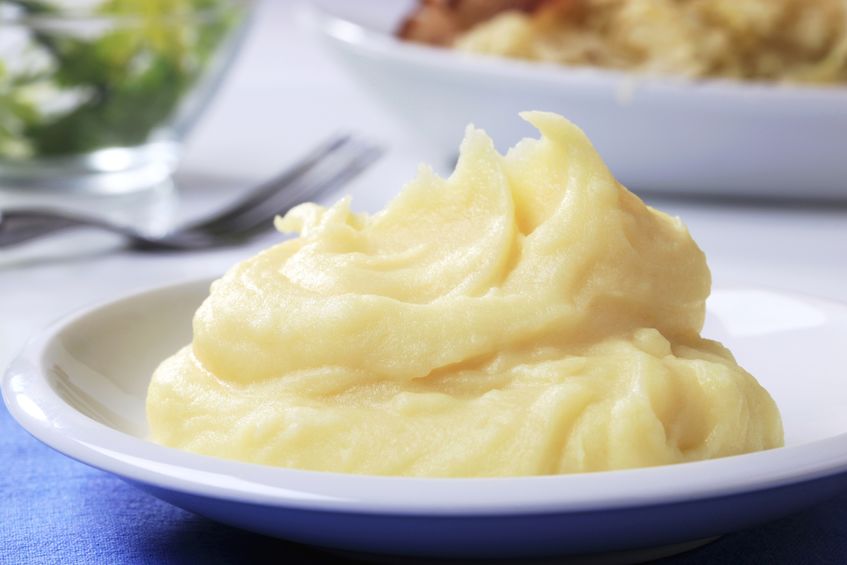
What Other Ingredients Can You Add?
You can add all kinds of ingredients to mashed potatoes to boost flavor, texture, or richness. Here are some popular and creative options:
Dairy & Fat
Sour cream – adds tang and creaminess.
Cream cheese – makes them extra rich and smooth.
Buttermilk – adds a mild tang and fluffy texture.
Greek yogurt – lightens the dish while keeping it creamy.
Goat cheese or Boursin – bold, herby flavor and silky texture.
Browned butter – adds a deep, nutty richness.
Flavor Boosters
Roasted garlic – sweet and mellow depth.
Caramelized onions – savory and slightly sweet.
Horseradish – sharp heat that pairs well with beef.
Mustard (Dijon or whole grain) – subtle sharpness.
Fresh herbs – chives, parsley, thyme, rosemary, dill.
Grated Parmesan or sharp cheddar – salty, cheesy flavor.
Truffle oil – earthy, luxurious finish (use sparingly).
Texture Add-ins
Bacon bits or pancetta – crispy, smoky bites.
Green onions or scallions – sharp and fresh.
Cooked spinach or kale – for color and nutrition.
Corn or peas – sweet pops of texture.
Mix and match based on the meal or mood—mashed potatoes are a perfect canvas!
How Can You Make Mashers for the Latose Intolerant?
You can make delicious mashed potatoes without dairy, and lactose-intolerant guests won’t miss a thing. Here’s how:
Use Plant-Based Milk
Swap regular milk with unsweetened, unflavored plant-based options:
Oat milk – creamy and neutral.
Almond milk – light with a mild nutty flavor.
Soy milk – richer and closer to cow’s milk.
Coconut milk (lite) – creamy but with a slight coconut taste.
Warm the milk before adding to keep the potatoes fluffy.
Replace Butter – Use:
Olive oil – smooth, slightly fruity flavor.
Dairy-free margarine – similar to butter in taste and texture.
Garlic-infused oil – adds richness and flavor.
Add Flavor Without Dairy
Roasted garlic – for depth and sweetness.
Herbs – chives, thyme, parsley, or dill.
Mustard or lemon zest – for a bright pop.
Vegetable broth – adds moisture and savory flavor.
Bonus Tips
Use starchy potatoes (like Russets) for the fluffiest texture.
Don’t overmix—this still applies to dairy-free mashers.
You’ll end up with creamy, flavorful mashed potatoes no one will guess are lactose-free.
What If You Are Watching Your Cholesterol?
If you’re watching your cholesterol, you can still enjoy mashed potatoes—just make a few smart swaps. The key is to reduce saturated fat while maintaining satisfying flavor and texture.
Skip or Swap the Butter
Use heart-healthy olive oil instead of butter. It adds richness without cholesterol.
Try avocado oil or canola oil for a neutral taste and healthy fats.
Use Low-Fat or Non-Dairy Milk
Choose unsweetened almond, oat, or soy milk. These are naturally cholesterol-free.
If you use dairy, go with low-fat or skim milk instead of cream or whole milk.
Add Flavor Without Fat
Stir in roasted garlic, fresh herbs, or a splash of lemon juice.
Use vegetable broth for moisture and a savory boost.
Avoid Cheese and Cream
Skip cheese, sour cream, and heavy cream—these add saturated fat and cholesterol.
Keep It Light but Satisfying
Use Yukon Gold potatoes for natural creaminess without needing much added fat.
Mash until smooth and don’t overwork them to keep the texture light.
With these swaps, you can enjoy a healthy bowl of mashed potatoes without sacrificing taste or heart health.
What Can You Do With Leftover Mashed Potatoes?
| Idea | Description |
|---|---|
| Potato Cakes | Mix with egg, breadcrumbs, and herbs. Shape into patties and pan-fry until golden and crispy. |
| Shepherd’s Pie | Spread over a layer of seasoned ground meat and veggies. Bake until the top is browned. |
| Mashed Potato Waffles | Spoon into a greased waffle iron for crispy, savory waffles. Add cheese or herbs for extra flavor. |
| Soup Thickener | Stir into soups or stews to add creaminess and body without using cream. |
| Mashed Potato Muffins | Combine with eggs, cheese, and veggies. Bake in muffin tins for easy, savory bites. |
| Potato Gnocchi | Mix with flour and egg to make soft dough. Shape into gnocchi and boil until tender. |
| Mashed Potato Bread | Add to bread dough for a soft, moist texture and subtle potato flavor. |
| Stuffed Peppers or Mushrooms | Use mashed potatoes as a creamy filling mixed with herbs, cheese, or chopped veggies. |
| Croquettes | Roll into logs, bread, and fry. Crisp on the outside, creamy on the inside. |
| Breakfast Hash Base | Sauté with chopped veggies and eggs for a quick, hearty breakfast. |
The Two Most Frequently Asked Questions About Mashed Potatoes
Potatoes have gotten a bad rap over the years. But the fault doesn’t lie with the potato, which is quite good for us. Instead, the fault lies in all the fatty and heavy ingredients we add to/put on top of potatoes.
The holiday season is one time when we would prefer not to worry about all that, though. I know that at the Thanksgiving table, there is nothing I look forward to more than rich and creamy mashed potatoes, and I refuse to apologize for it.
Mashed potatoes are a simple dish – comfort food at its best. But, for all their simplicity, people do tend to ask the same questions about making mashed potatoes year after year.
So, bookmark this article or print it out because here are Reluctant Gourmet’s definitive answers to this pair of persistent potato queries. And don’t forget to check out my recipe for great mashed potatoes.
Help! I have 16 coming for dinner. How many potatoes should I allow per person?
The most common answer to this question is to allow 1/3 to 1/2 pounds of raw potatoes per person. This translates to between 5 and 8 oz. of potatoes per person. That’s the simple answer, but many variables must be considered as with most seemingly straightforward questions.
Remember, for each eight oz, you’ll be mixing those potatoes with other ingredients. Of raw potato, you could have up to 1 pound of mashed potatoes.
And while I might load up with a majestic mound of mashers in the middle of my plate and then carefully place minuscule portions of cranberry, green beans, turkey, and dressing around the edges, many people will want to give equal time to all of the other traditional Thanksgiving offerings.
1. How are you going to make your mashed potatoes? Suppose you’re mashing them with chicken broth and some light margarine. In that case, you might consider allowing closer to 8 oz. of potato per person, but if your plans include creme fraiche, cream cheese, sour cream, heavy cream, or other rich and calorie-dense ingredients, go with no more than 5 ounces of raw potatoes per person.
2. Who are you serving? If your holiday table is decidedly child-heavy, allow two oz of raw potato per child. On the other hand, if you are entertaining the entire defensive line of the Philadelphia Eagles, you might go for closer to 10-12 oz. of raw potatoes per person. And if any of your dinner guests are on Atkin’s or are Somersizing, throw out all your calculations.
3. What else will you be serving? I’m a fan of starches, so I’m all for the stuffing-mashed potato-big fat dinner roll trifecta, but if you’re trying to offer a balance of proteins, carbs, and fats at your holiday table, consider the other starches on the menu.
Suppose you’re serving sweet potatoes, other root vegetables such as carrots, parsnips or turnips, stuffing or dressing, rolls or biscuits, or another potato dish. In that case, you might reduce the potatoes to only 3-4 oz. or so per person.
4. How will you be preparing your potatoes? If you’re just straight-up mashing the potatoes by hand, you will have a denser end product than if you use your mixer.
If you whip your potatoes, they will increase in volume because of whipping in some air, so you can probably get away with 3-4 oz. of potatoes per person if you are whipping them. When hand mashing, stick with 5-8 oz.
Help! I only have so many burners on my stovetop. Can I make the mashed potatoes ahead of time and reheat them in the oven the next day?
The short answer is, “No, please don’t do that.” But, since I want you to understand why I’m telling you what I’m telling you, I will elaborate.
Potatoes contain large starch granules, especially those we like to use for mashed potatoes (Russets and even Yukons). The starch granules swell up or gelatinize when we cook them, giving us the light and fluffy texture we expect in a potato.
Agitating the potatoes while they are still warm breaks up these fluffy starch granules. That’s how we get a nice and creamy mashed potato. Here’s the problem, though. Once your wonderfully warm and creamy mashed potatoes cool, the starches firm up, leaving you with cold and clumpy glue.
If you must reheat your mashed potatoes, cook and mash just the potatoes the day before. Then, reheat with your additional ingredients right before serving. But, of course, you’ll still be left with the issue of burner space.
An alternative is to mash the potatoes the day before with all your other ingredients but with more liquid than you would typically use. You’ll want the potatoes to be a bit looser in consistency than how you would typically serve them. When you reheat them, your potatoes should have the right consistency for serving.
Another trick I have seen for reheating mashed potatoes is holding them in a low crock pot. This might be an option for you if you have the counter space. I recommend stirring them periodically to keep them as evenly heated as possible.
You should not try and reheat the potatoes without agitating them unless you want a more sliceable end product. If you want a fresh-mashed consistency, use a masher again or stir them vigorously with a spoon.
And there you have it. However, I hope I have helped you consider the many variables inherent in planning potato quantities and given you my best advice about reheating mashed potatoes.
I hope you have a healthy and happy holiday season, and think of me kindly when you hear someone say, “Pass the potatoes, please!”

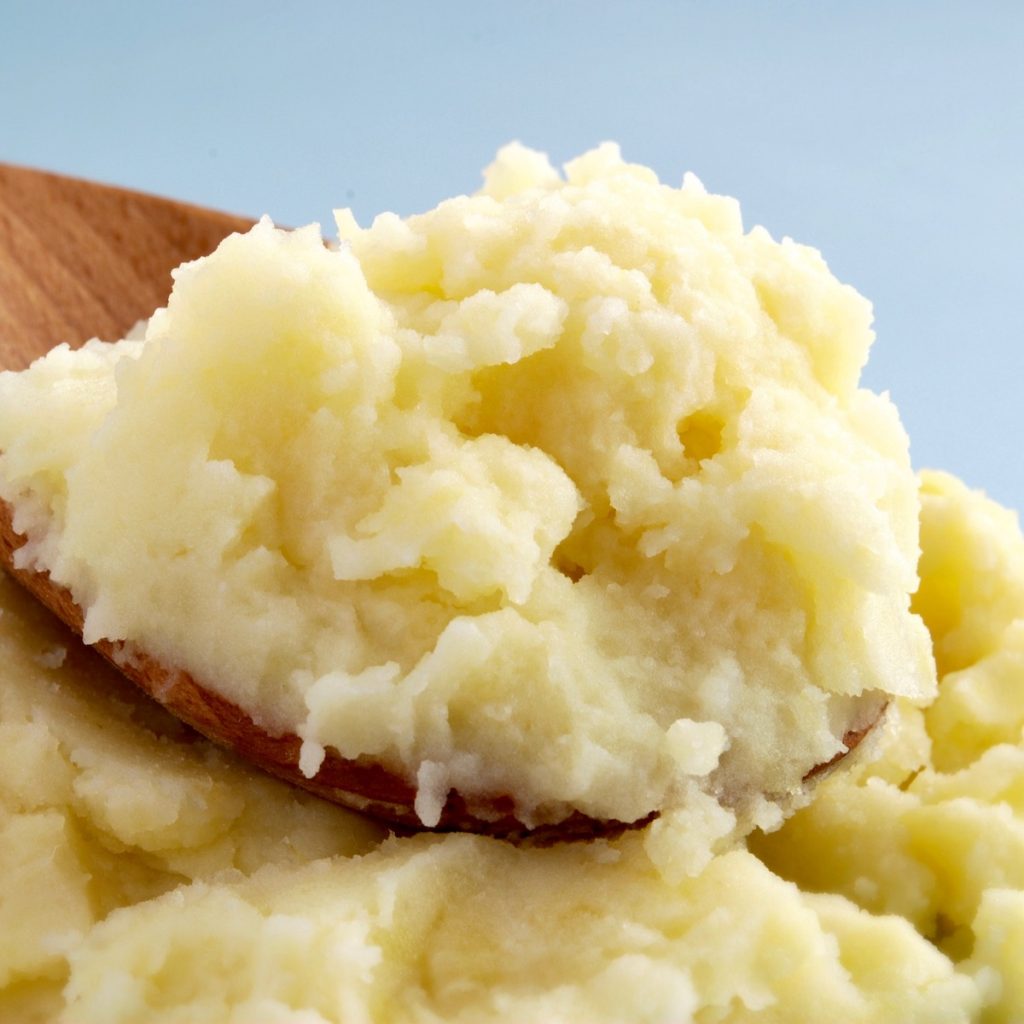

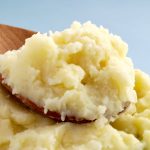


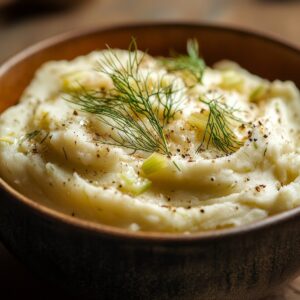
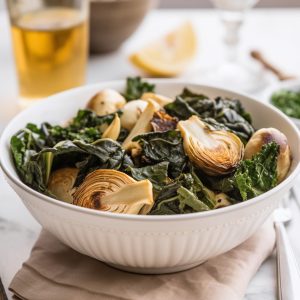
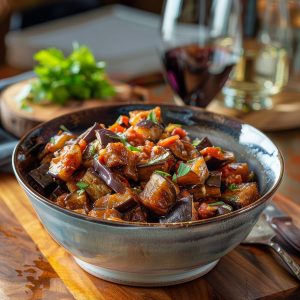
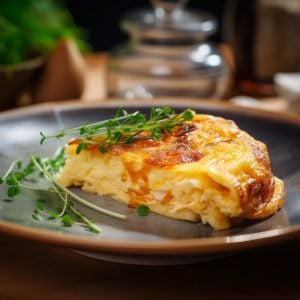
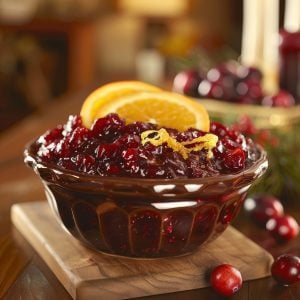


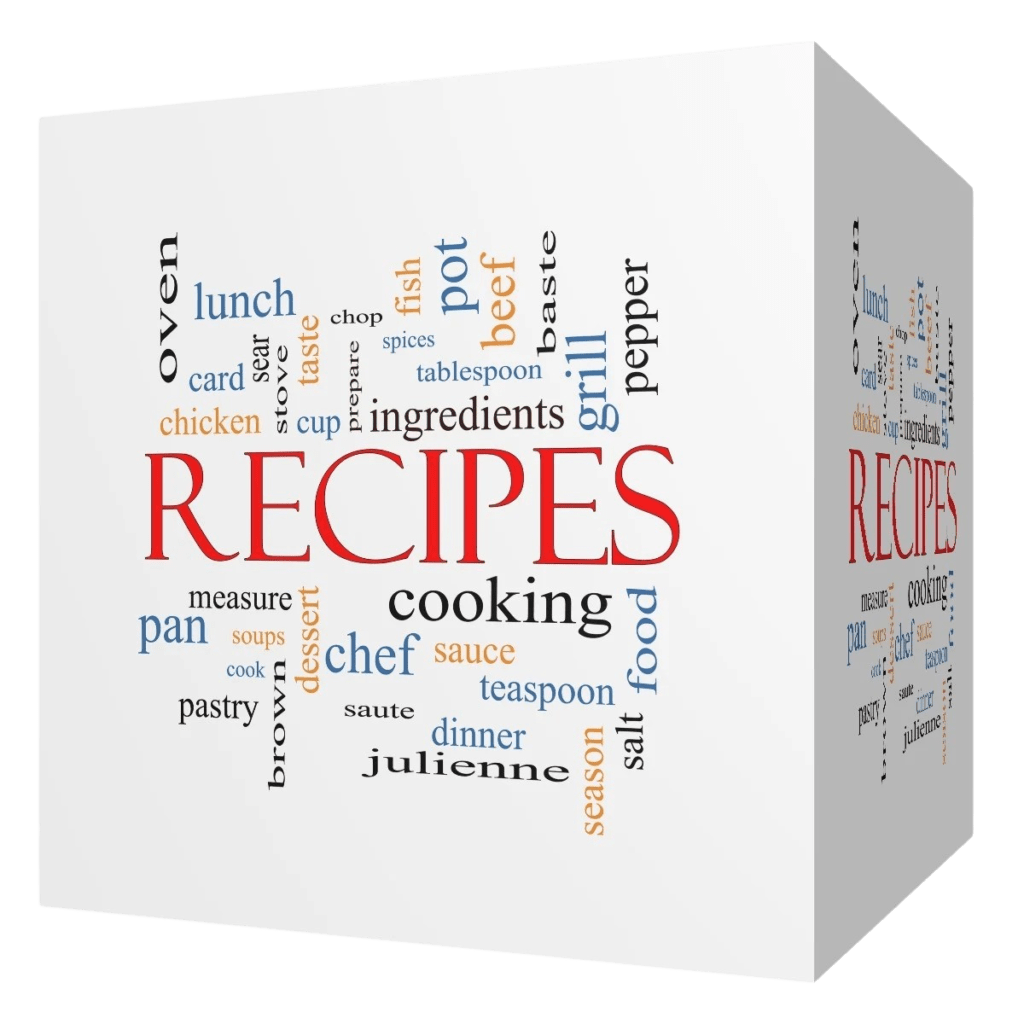
52 Responses
My addition to how to make great mashed potatoes, is to leave the skins ON, cut them in half or quarters, and cook until tender. Then, drain, add butter, salt to taste, and pepper, and about 1/4 to 1/2 cup of milk, depending on how many potatoes you have used. Then, add 1/2 tsp. of Baking Powder, and mix with mixer until fluffy. I, also, add minced onion, on occasion–yum! The baking powder is a French way of doing things, but it does make a difference, and “vive la difference!” Leaving the skins on adds a terrific texture, plus added vitamins–plus, you don’t have to peel the potatoes that way!
Everyone’s suggestions have been great (especially the pickled walnut one) but I find that instead of milk, using a combination of condensed milk, and regular milk makes mashed potatoes AMAZING! Especially if you use a mixer to blend them.
Here are 2 alternative ways I like to enhance my mashed potato:
1. Crush a clove or 2 of garlic in while mashing.
2. Stir in a few teaspoons of black olive paste.
I visited the Idaho Potato web site for tips on mashing potatoes. They suggest placing a quarter of a lemon in the cooking water to prevent potatoes from breaking up. Cook them in their skins to prevent water logging. After cooking, pull the skin from the end of the potato to remove easily. While mashing, add WARM milk to the potatoes gradually to gauge consistency; then add any other favorite condiments.
Hello! My addition to how to make great mashed potatoes, is to leave the skins ON, cut them in half or quarters, and cook until tender. Then, drain, add butter, salt to taste, and pepper, and about 1/4 to 1/2 cup of milk, depending on how many potatoes you have used. Then, add 1/2 tsp. of Baking Powder, and mix with mixer until fluffy. I, also, add minced onion, on occassion–yum! The baking powder is a French way of doing things, but it does make a difference, and “vive la difference!” Leaving the skins on adds a terrific texture, plus added vitamins–plus, you don’t have to peel the potatoes that way! Christie Chiomento
Once My potatoes are softened,I remove them from the saucepan, strain them, then put them in the food processor with a pinch of nutmeg, a hunk of mature cheddar cheese, and a dash of Worcestershire sauce.
Wow, they drive my husband wild…yeahhh.
I’m here at your web page and I’m going to take a couple of swipes at your mashed potatoes, but not TOO many!
1) I think that if you are using Yukon golds or Finns, it is better to leave them whole. My theory is that when you quarter them they loose starch into the water.(I am assuming you have fist size or slightly larger).
2) I use a masher but I cook them a bit longer and they never a lump. I think people undercook their mashed potatoes. they should not be falling apart, but on the other hand I notice no flavor degradation by cooking until VERY soft. I think this is a better way to get rid of lumps, then ricing.
3) and NOW for the most controversial part: I use half and half rather than milk. I am bad and evil, but it tastes so GOOD!
4) Also, if you want to pique the sweetness, try throwing in one small quartered parsnip or add more if you like the flavor.
I saute 2-3 carrots & 1 onion in butter – make a puree – add a couple of slices of american cheese and mix in mash potato mixture top with parmesan shredded cheese, a bit of drizzled butter and place under broiler until golden.
Great Web site!!! Regarding your mashed potatoes – my preference is more butter, less milk. Lea Curry’s suggestion of some parsnips is good – as an alternative piquanter I like a heaped teaspoon of hot English mustard. Regards Harry Ventriss
More butter = more fat
Less milk = reduction in bone density
Hi Reluctant Gourmet — from Allan Taylor in Adelaide, Australia
I admit that sometimes I add cream to them when, after mashing, I convert the potato into a puree with a hand-held electric blender. Yummy The next step is presentation, which you neglect to mention. On the dinner plate, if served as such, upon a white cone of potato I add on top half a pickled walnut. These are jet black and have a striking flavor contrast to the potato. If the mashed potato is served in a large bowl at a dinner party I use a surrounding ring of pickled walnuts (which go well with roast meats) to provide a culinary sight worthy of a king. Regards Allan Taylor
You’re missing a key ingredient! Cream Cheese! You’ll be licking your masher clean!
Also, to the person who suggested half & half, try using fat free evaporated milk. You’ll get that wonderful creamy “fat” flavor, but. . . . . the grams of fat just aren’t there! Try it, you’ll love it! “The Trotting Gourmet”
Mashed potatoes are my favorite food, and I?ve recently found a great source of information on mashed potato preparation when I came across your mashed potato recipe on ReluctantGourmet.com. I?m writing to you to suggest ideas to further develop your mashed potato recipe found on your site. You show a thorough understanding of the art of cooking mashed potatoes, without being condescending, and the recipe along with your bottom line could benefit from a few adjustments.
The recipe?s audience is composed of anyone interested in making excellent mashed potatoes. You succeed in helping people make perfect mashed potatoes by pointing out that the preferences of the reader will alter what they perceive as the perfect bowl of mashed potatoes.
The recipe is divided into three sections: a theoretical explanation of mashed potato preparation, a basic recipe, and comments from visitors. Each section serves an important function and enhances the reader?s ability to make perfect mashed potatoes. Anyone interested in making perfect mashed potatoes will be interested in the theoretical explanation of mashed potato preparation. This section helps the reader identify the nuances of the process and encourages the reader to experiment with these nuances in their pursuit of perfect mashed potatoes.
It is clear that you have a great deal of knowledge on how to make perfect mashed potatoes, and a knack for explaining to others how to do so themselves. This is an excellent recipe, and I plan on taking full advantage of it in my quest for perfect mashed potatoes.
If you REALLY like mashed or smashed ‘tators—add a tablespoon of mayo!
Never heard of that Alice and will give it a try.
Apparently, individual tastes, when it comes to mashed potatoes, can vary widely. I disagree mostly with your contributors. Their results are what we in the Midwest would term ‘whipped potatoes’, something that is to be studiously avoided.
I would only use mashed potatoes with gravy – never with butter – and they should be slightly dry and textured. (My ex-wife, however, always said that my ‘perfect’ potatoes were ‘lumpy’. (Hers were like library paste!)) This is probably a subject that no one will completely agree on.
First, I only use peeled, quartered, Idaho baking potatoes. (I have never found any use for red potatoes. And that includes potato salad.) Often I include a piece of rutabaga or parsnip with the potatoes, but it will need a bit of a head start. When they are fork-tender I drain them and return them to the pot, but not under any heat. (I reserve some of the starch water for the gravy which is a simultaneous operation.)
I crush the potatoes once with a masher, add the milk or half & half, and then let them sit for a couple of minutes so we’re not mixing cold with hot. The ensuing mashing is comprised of a few quick strokes so as not to gum things up. (Much like the care one would take in the delicate mixing of a meatloaf by keeping things aerated.) All other seasonings are in the gravy.
If I ever crave butter/parsley/garlic/sour cream/ or anything like that on a potato, I would either bake them in hot resin or boil new potatoes in the spring. Mashed is not where that stuff belongs. Sorry.
At least you’re not being condescending about somebody else’s preference for a mashed potato. Oh wait…
I like to add a half cup of cream cheese to my recipe and season with garlic salt and pepper. That’s my input.
try to add a little garlic powder little bit white pepper and a drizzle of nutmeg / and make it even fancier mix some cooked cauliflower and fried bacon pieces/ mix all together and put casserole for 5 minutes or so in oven on 350/ good luck good eating
Your recipe is wonderful. Another suggestion: I sautee’d shallots until crisp and add them to mashed potatoes with a dash of olive oil – Yum!
People think you made something special. The shallots are very flavorful.
i like potatoes. And this font.
That was cute & funny.
Mashing potato…we were both right…
expert 🙂
Hi. I am enjoying your recipes. It’s a little harder for me because I am lactose intolerant, diabetic, celiac and have diverticulitis. Anyway, I add turnips to my mashed potatoes – makes them very tasty and more healthy. If you try this, I’d love to know how you liked it.
I just wish to say that your blog post is well written.
Hopefully I can follow up with your other forthcoming post if I have time.
Thanks and stay sharp to carry on with the writting.
Consider this recipe, where the ratio of potato to butter is 2 to 1. I tried it, but felt it was just too much butter (and I love butter). Now I go with 3 to 1 or 4 to 1 (depending on how much butter I have) and they are the best mash potatoes I have ever had.
Great advice and so thorough. I appreciate the thought behind your post. Thanks!
I love garlic mashed potato. I boil russet with about 3-4 cloves of garlic and then mashed. The garlic is soft and yummy in the potato add your butter and milk according to the consistancy you want and yum. So easy and you can add more or less garlic cloves depending on taste.
Sounds delicious Tammy. Thanks for sharing.
The point about ‘with the skins on’ is not simply about taste and texture. Nearly all the ‘goodness’ (Vitamin C, particularly) in a potato is right under the skin, so when you peel potatoes (and whether you put the peels in a bag with the potatoes or not), you lose most of the nutrition.
If you like smooth mashed potato (without the skins), the most nourishing method is to cook the potatoes with the skins on (it’s best to use medium-sized and uniform potatoes) and then peel off just the brown/red skin with the aid of a knife. It often slips right off, especially if it’s the thicker kind of skin you find on a russet.
Gary, you left nothing unturned in this thorough, comprehensive post. Excellent work!
Thank you very much Brooks.
Hi, I grew up in farmland ,ontario and We were taught that the general rule for cooking veggis is this.
If it grows below the ground you start it in cold water then bring to a boil. If it grows above the ground, you start to cook in boiling water. I don’t know why but if it worked for my granny in the early 1900’s there must be something to it.
What a great general rule. Thanks
I’m in my 60’s and married 40 some years. During my time of cooking I used Instant Mashed Potatoes which tasted pretty good… I worked full time and raising chiildren with hubby working shift work and I worked around his schedule… I just started making Home Cooked mashed potatoes and followed this recipe leaving some skins on for flavor and vitamins… YUMMMO Missed out on this flavor since a kid where I had a stay at home mom. THANKS… I’m feeling special again
Thanks for letting me know Spikey.
mash and rutabaga, try it, cook the rutabaga with your potato and mash just as you would with out, love it, gives it a flavor.
I steam my potatoes whether I eat them whole or mashed. Wonderful!
Firstly, thank you so much for sharing your amazing and creative knowledge regarding “The Art of Perfect Mashed Potatoes”, you have provided me with all of the information I was seeking in one shot! I’ll be attempting to create a nice fluffy dish for our Thanksgiving meal. Love your site and look forward to discovering more of your culinary tips.
Thanks Shelly for your kind words. Have fun with those potatoes and Happy Thanksgiving.
I make my mashed potatoes just the way the chefs recipe, I have done this since the age of 12 with no problem.
I’m going to try mashing Yukon or russet potatoes with some sweet potatoes; in a ratio of 25% sweet potatoes. I will also add plenty of butter, cream and seasonings. Hope it turns out the way I expect it to! 🙂
Sounds good Rose. Let us know how you like your results.
I like to cook my potatoes (No matter which kind) with 2/3 Potatoes and about a 1/3 of the amount with chopped up cauliflower cooked together then I use a old fashioned masher and Carnatian can milk, butter and some crushed garlic,salt, ppepper, and of course real butter. Mix it all with a mixer. Delish!!! And you get veggies with the starch but not as much starch and a lot healthier. I do like to try other root veggies. But I make my potatoes soup except I keep some chunks of potatoes out and add.them back as I warm them back up to serve
I have really enjoyed reading all the ideas and comments. Thank you.
You are welcome Charlie and thank you for your great tips.
I was surprised to see that no one said you must HEAT THE MILK before adding
it. Makes all the difference. Amount is to taste.
I have never tried this but I will. thanks for sharing Joyce.
In a recent TV program on Norwegian television a chef told that you should
avoid salt until you are adding spices (so, no salt in the water). After
draining, you should let the potatoes rest in the pot for a minute or two to
dry up a bit. And you should minimize the work you do on the potatoes. This
is to avoid the mash becoming sticky and “glue like”. I think chefs like to
use a lot of double cream as well as butter in mashed potatoes.
Hi I have a recipe for mashed potatoes to die for!
I roast a whole head of garlic for 30-45 minutes. Once the pototoes are
cooked I add garlic, warm milk and butter, salt and pepper to taste and
mash until desired consistency. Your guest and family will ask for
seconds I promise!
Great tip Bernice. Thanks for sharing.
Really delicious recipe. I love it yummy!!! It’s really awesome. Will surely try this.
I’ll try if this recipe would make my mashed potatoes better. I also add lion’s mane mushroom powder from for the extra protein and health boost